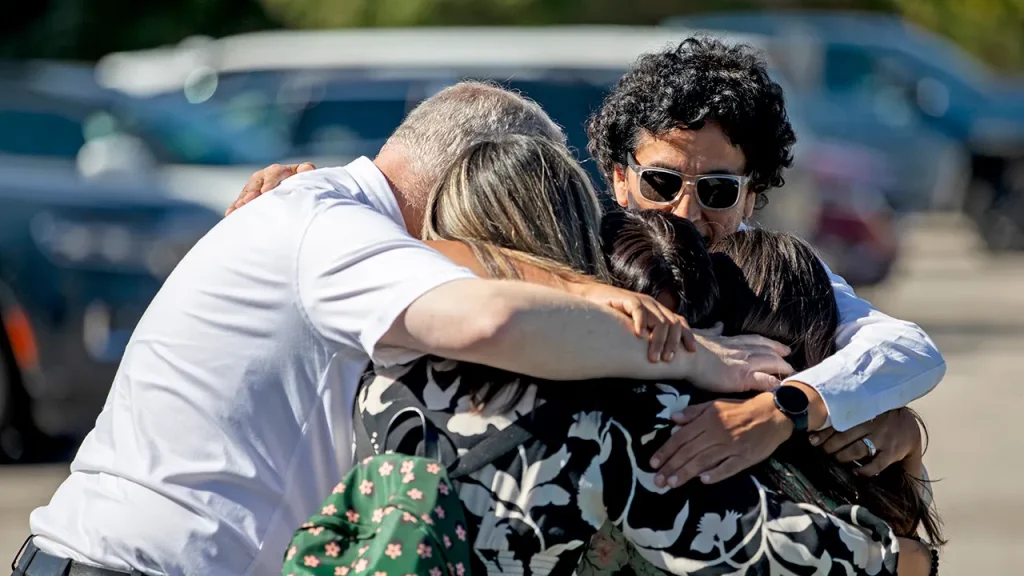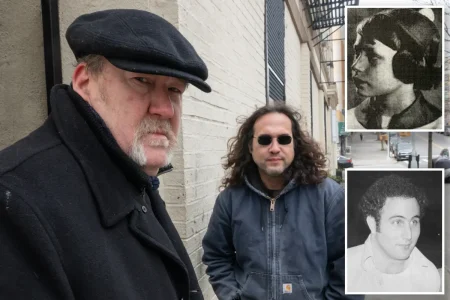Marine Veteran’s Deadly Attack on Michigan Mormon Church: A Tragic Sunday Morning
In a shocking act of violence that shattered the peace of a Sunday worship service, Thomas Jacob Sanford, a 40-year-old Marine veteran, launched a devastating attack on the Church of Jesus Christ of Latter-day Saints in Grand Blanc Township, Michigan. The horrific incident left at least two people dead and several others injured, as hundreds of worshippers found themselves suddenly thrust into chaos and terror. According to police reports, Sanford drove his Chevy Silverado truck through the front doors of the church around 10:30 AM before exiting his vehicle and opening fire on the congregation. In the aftermath of the shooting, he allegedly set the building ablaze, adding to the destruction and panic. The rampage ended when responding officers confronted Sanford, exchanging gunfire with him and ultimately killing him. Ten gunshot victims were transported to local hospitals, with authorities later confirming that two of them had succumbed to their injuries.
The perpetrator of this tragedy, Thomas Jacob Sanford, was a resident of nearby Burton, Michigan, and had served in the United States Marine Corps from 2004 to 2008. During his military career, Sanford worked as an organizational automotive mechanic and vehicle recovery operator, and notably deployed to Iraq as part of Operation Iraqi Freedom. His service record included several commendations, including the Marine Corps Good Conduct Medal, Sea Service Deployment Ribbon, Iraq Campaign Medal, Global War on Terrorism Service Medal, and the National Defense Service Medal. Sanford achieved the rank of sergeant before completing his service at Camp Lejeune, North Carolina, with the 2d Maintenance Battalion, Combat Logistics Regiment 25, 2d Marine Logistics Group. This background of military service stands in stark contrast to the violent actions he would later take against innocent worshippers, raising difficult questions about the transformation that led to such devastating violence.
Behind the headlines of this tragic event was a man with a family and personal struggles. Police sources revealed that Sanford had a wife and a son, painting a picture of domestic ties that makes his violent actions all the more difficult to comprehend. A glimpse into his family life emerged through a 2015 GoFundMe page that had raised over $3,000 for Sanford’s now 10-year-old son, who was reportedly born with congenital hyperinsulinism (CHI), a rare genetic condition affecting insulin production in the pancreas. This detail hints at the medical challenges the family had faced, though authorities have not indicated whether these personal circumstances played any role in Sanford’s motives for the attack. The contrast between Sanford’s apparent role as a husband and father dealing with his child’s medical condition and his later transformation into the perpetrator of a mass shooting highlights the complex and often hidden nature of human struggles that can precede acts of violence.
The community response to the tragedy has been one of shock and grief, particularly poignant given that the attack occurred during a regular Sunday service when families and individuals had gathered for peaceful worship. Grand Blanc Township Police Chief William Renye provided details of the harrowing sequence of events, describing how Sanford crashed through the church doors before opening fire on those inside. The church building, once a sanctuary for spiritual reflection and community gathering, was transformed in moments into a scene of chaos, with first responders rushing to aid victims even as they confronted the armed assailant. The timing of the attack—occurring just one day after the death of longtime national LDS Church president Russell M. Nelson at age 101—added another layer of sorrow for members of the Mormon faith, who were already mourning the loss of their spiritual leader when violence struck one of their congregations.
The incident in Michigan joins a disturbing pattern of attacks on places of worship across the United States in recent years, highlighting vulnerabilities in spaces meant to be sanctuaries of peace and reflection. While authorities have not yet disclosed information about Sanford’s motives or how he started the fire that compounded the damage to the church, the investigation continues as law enforcement works to piece together the full timeline and circumstances of the attack. The weapon used appeared to be a rifle, according to police statements, though more specific details about the firearm have not been released. This attack follows other recent incidents targeting religious gatherings, including a shooting at a Minneapolis church that had similarly shocked that community, underscoring concerns about security in houses of worship that traditionally maintain open and welcoming environments.
As the Grand Blanc Township community begins the difficult process of healing from this tragedy, many questions remain unanswered about what drove a military veteran with apparent family ties to commit such a horrific act of violence. The ripple effects of the shooting extend beyond the immediate victims to touch all those who witnessed the attack, the first responders who confronted its aftermath, and the broader Mormon community now faced with the task of rebuilding both their physical church and their sense of security within it. The contrast between Sanford’s honorable military service and his final violent actions presents a troubling paradox that speaks to the complex interplay of factors—potentially including mental health issues, personal grievances, or ideological motivations—that can lead to such devastating outcomes. As investigators continue their work, a community mourns its losses and contemplates how to move forward from a Sunday morning that began with worship and ended in tragedy.











